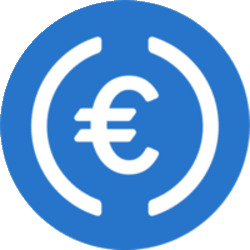The Deutsche Börse and Circle partnership integrates Circle’s regulated stablecoins — EURC and USDC — into Deutsche Börse’s 3DX and Clearstream infrastructure to reduce settlement risk, lower transaction costs, and enable institutional custody and trading under the EU’s MiCA framework.
-
What happened: Deutsche Börse signed an MoU with Circle to list and custody EURC and USDC.
-
Where it will trade: initial listings target 3DX (360T) and settlement via Clearstream with Crypto Finance as sub-custodian.
-
Regulatory context: enabled by MiCA compliance and set against debate over a possible EU multi-issuance stablecoin ban.
Deutsche Börse Circle partnership brings EURC and USDC to 3DX and Clearstream under MiCA — read how institutions benefit and next steps for European stablecoin adoption.
What is the Deutsche Börse and Circle partnership?
The Deutsche Börse and Circle partnership is a memorandum of understanding to integrate Circle’s regulated stablecoins — EURC and USDC — into Deutsche Börse’s trading and post-trade infrastructure. The agreement focuses on listing and trading via 3DX and enabling custody through Clearstream, aiming to improve settlement efficiency for institutions.
How will this integration work under MiCA?
The collaboration is enabled by the EU’s Markets in Crypto-Assets Regulation (MiCA), which became fully applicable in late 2024. Circle announced MiCA compliance in July 2024. Under the MoU, trading routes (3DX/360T) will connect to Clearstream custody with Crypto Finance acting as sub-custodian to facilitate settlement and custody workflows.

Source: Circle
Why does this matter for institutions?
Front-loaded benefit: this partnership aims to reduce settlement risk, cut transaction costs, and speed settlement cycles for banks, asset managers, and exchanges. By integrating regulated stablecoins into established market infrastructure, institutions gain a standardized rails option for tokenized cash equivalents.
What are the operational and market implications?
Key operational effects include streamlined trading-to-settlement workflows, the potential for tokenized cash balances in custody, and clearer legal frameworks for euro- and dollar-pegged stablecoins. Market implications include wider institutional access to EURC and USDC liquidity on regulated venues and possible product development that leverages on-chain settlement.
How does the potential EU multi-issuance stablecoin ban affect this deal?
Recent reporting indicates European authorities are considering a ban on multi-issuer stablecoins — tokens issued under a single brand from multiple jurisdictions. The recommendation reportedly originated with the European Systemic Risk Board (ESRB). While not legally binding, such guidance could influence national regulators and market access for non-compliant issuers.
Which stablecoin issuers are affected and how are they responding?
Circle became the first global issuer to claim MiCA compliance, positioning EURC and USDC for regulated European use. Tether (USDt) has publicly declined MiCA compliance citing local reserve requirements. Several banks and entities (for example, Société Générale-Forge) are concurrently developing MiCA-aligned stablecoin initiatives in euros and dollars.
Frequently Asked Questions
Will EURC and USDC be available to retail investors on 3DX?
Initially the focus is on regulated institutional trading and settlement on 3DX and post-trade custody via Clearstream. Retail availability will depend on venue rules and market access decisions by trading platforms and custodians.
Does MiCA guarantee legal certainty for stablecoins in Europe?
MiCA establishes a harmonized regulatory framework for issuers and service providers, increasing legal clarity, but national authorities and supervisory guidance will still shape practical access and enforcement.
How might a multi-issuance ban change stablecoin markets?
If adopted, restrictions on multi-issuance could limit cross-jurisdictional token issuance models and push issuers to localize issuance or pursue single-issuer, fully compliant structures under MiCA.
Key Takeaways
- Integration: Deutsche Börse and Circle signed an MoU to list EURC and USDC on regulated Deutsche Börse venues.
- Regulatory enabler: The move leverages MiCA compliance to bring stablecoins into mainstream market infrastructure.
- Institutional impact: Expected benefits include reduced settlement risk, lower costs, and new custody solutions through Clearstream and Crypto Finance.
Conclusion
The Deutsche Börse Circle partnership marks a significant step in institutionalizing stablecoins in Europe by integrating EURC and USDC into regulated trading and custody rails under MiCA. Market participants should monitor regulatory guidance on multi-issuance stablecoins and infrastructure rollouts as the collaboration moves from MoU to implementation.
Author: COINOTAG
Related coverage (plain text): ING, UniCredit join banks developing euro stablecoin under MiCA. Magazine: How do the world’s major religions view Bitcoin and cryptocurrency?
